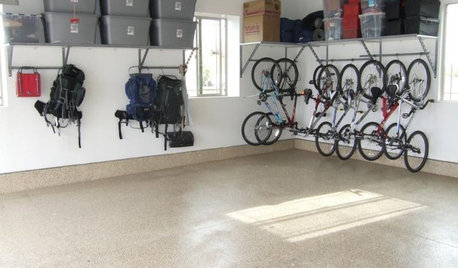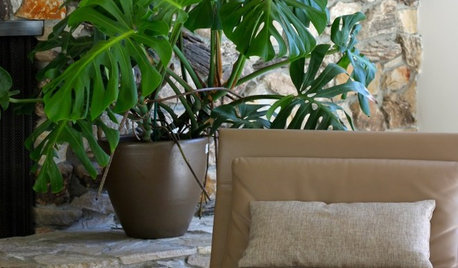Brown tips on big, curly leaf philodendron
nyad
11 years ago
Featured Answer
Sort by:Oldest
Comments (6)
tapla (mid-Michigan, USDA z5b-6a)
11 years agoRelated Professionals
Accokeek Landscape Architects & Landscape Designers · Beachwood Landscape Architects & Landscape Designers · Harrison Landscape Architects & Landscape Designers · Jackson Landscape Contractors · Cordele Landscape Contractors · Dallas Landscape Contractors · Duarte Landscape Contractors · East Lake-Orient Park Landscape Contractors · Euclid Landscape Contractors · Fort Atkinson Landscape Contractors · Fort Payne Landscape Contractors · New Brighton Landscape Contractors · Plainview Landscape Contractors · Markham Landscape Contractors · Barstow Interior Designers & DecoratorsTiffany, purpleinopp Z8b Opp, AL
11 years agonyad
11 years agotropicbreezent
11 years agoTiffany, purpleinopp Z8b Opp, AL
11 years ago
Related Stories

HOUSEPLANTSOne Pot, One Big Shot of the Tropics
Give your rooms exotic flair in a single stroke. Tall Kentia palm fits the tropical bill beautifully
Full Story
ENTERTAINING8 Stress-Busting Tips for Hosting Small Gatherings
Make entertaining easy with these ideas for casual get-togethers
Full Story
DECORATING GUIDES13 Decorating Tips for Short-Term Renters
Mirrors, curtains, lamps and other features set a stylish tone you can take with you
Full Story
BLACKHow to Decorate With Brown, Black — or Both
Black is best for engineered materials; brown works great for textures — and more designer tips for working with these two classic colors
Full Story
DECORATING GUIDES13 Decorating Tips for Older Homes
Preserve the personality of the past while designing for now with these tips for paint, rugs, window treatments and more
Full Story
MOVINGRelocating Help: 8 Tips for a Happier Long-Distance Move
Trash bags, houseplants and a good cry all have their role when it comes to this major life change
Full Story
HOLIDAYSChristmas Cleanup Tips for the Not Naturally Organized
Dreading the postholiday chores? First let yourself unwind. Then grab some boxes, a few supplies and this easy guide
Full Story
MOST POPULARGarage Cleaning Tips for the Overwhelmed
Don’t let this catch-all space get the better of you. These baby steps can get you started
Full Story
FARM YOUR YARDHow to Grow Vegetables in Containers
Get glorious vegetables and fruits on your patio with a pro’s guidance — including his personal recipe for potting mix
Full Story
DECORATING GUIDESConjure a Jungle in a Pot
Sprawling, climbing and with primitive-looking leaves, philodendrons bring untamed beauty to even the most civilized homes
Full StorySponsored
Zanesville's Most Skilled & Knowledgeable Home Improvement Specialists
More Discussions









birdsnblooms